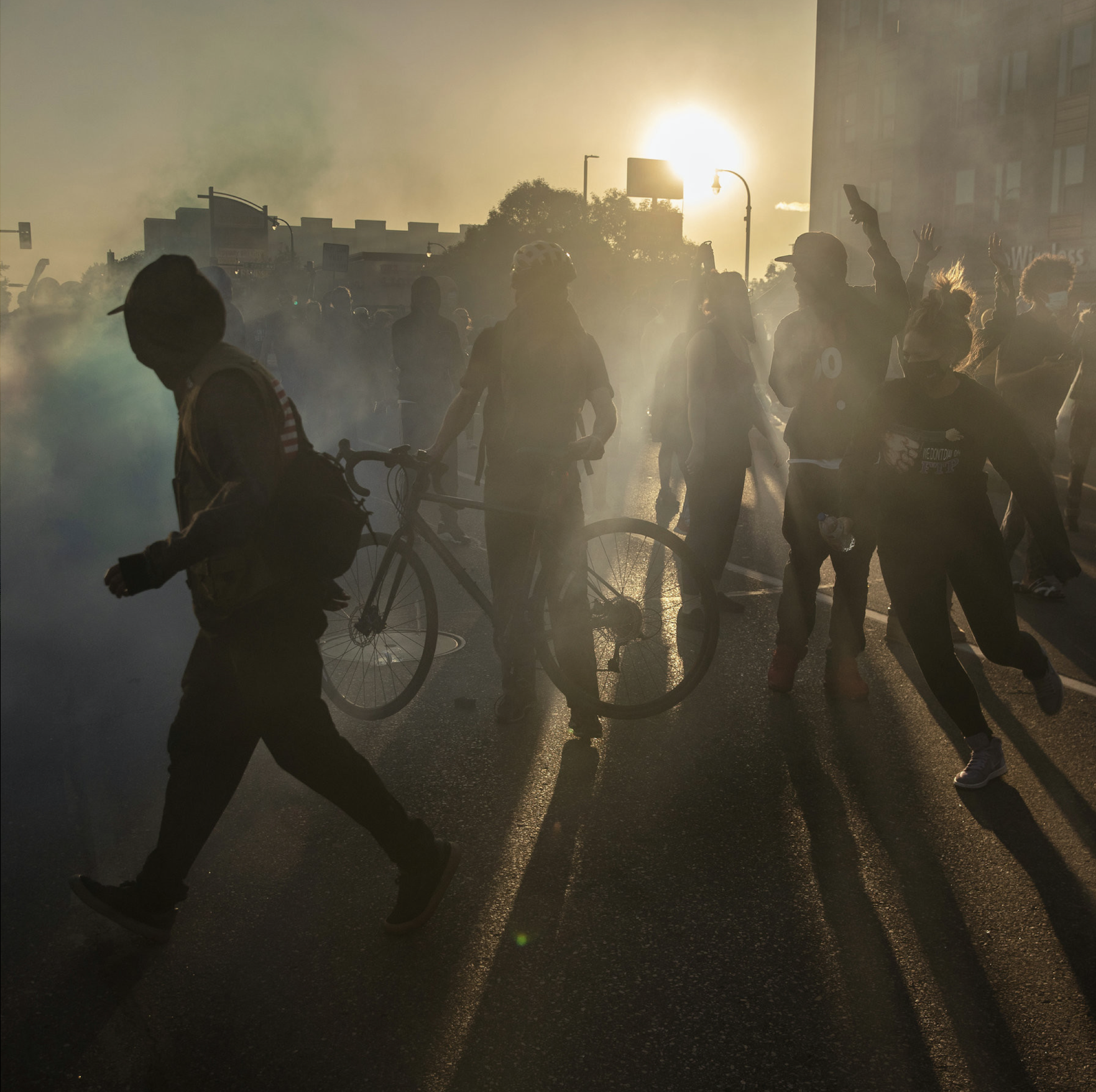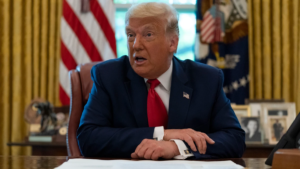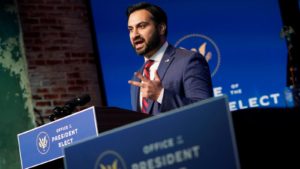Emotions were already raw over the toll of a pandemic that has killed more than 100,000 people across the country and cost millions of jobs.
They are parallel plagues ravaging America: The coronavirus. And police killings of black men and women.
Jimmy Mills’s life has been upended by both. His barbershop in Midtown Minneapolis was one of many small, black-owned businesses that have struggled to survive the pandemic. But Mr. Mills was hopeful because, after two months shut down, he was due to reopen next week.
Then early on Friday, the working-class neighborhood where Mr. Mills has cut hair for 12 years went up in flames as chaotic protests over the death of George Floyd and police killings of African-Americans engulfed Minneapolis and cities across the country.
“To have corona, and then this — it’s like a gut shot,” Mr. Mills, 56, said.
The upheaval sparked by a video capturing Mr. Floyd’s agonizing last minutes as a white police officer kneels on his neck is pulsing through an America already ragged with anger and anxiety. Emotions are raw over the toll of a pandemic that has killed more than 100,000 people across the country and cost millions of jobs. On Sunday, at least another 600 Americans were reported to have died from Covid-19.
Minneapolis residents said outrage and protests in the aftermath of the killing of George Floyd were a result of a community being tested repeatedly in recent weeks by both police violence and the virus — and in ways that put America’s deep racial inequalities in stark relief.
The outbreak has inflicted disproportionate economic and health tolls on racial minorities and immigrants in Minneapolis and beyond. Black and Latino workers have been more likely to have lost their jobs. Many others are among the low-paid hourly workers who risk their health by going to work at grocery stores, nursing homes, factories, slaughterhouses and other jobs that cannot be done remotely.
The black community in Minnesota has also been hit hard by cases of the virus, just as African-Americans across the country are being infected and dying at higher rates.
A protester wiped a tear from another as they demonstrated on Lake Street.

Victor J. Blue for The New York Times
By one estimate, black people accounted for at least 29 percent of known Covid-19 cases in Minnesota, despite making up about 6 percent of the state’s population. African-Americans make up 35 percent of coronavirus cases in Minneapolis, though they are less than 20 percent of the city’s population.
“There are no words to describe what people are going through,” said State Representative Mohamud Noor, who represents a district with many Somalis and other immigrants. His great-uncle died of the coronavirus a few days ago, and Mr. Noor said he is losing track of how many other relatives and constituents are dying.
Mr. Noor said the school closures had hurt poorer students without laptops or reliable internet access to take classes online, and that waves of job losses had sent local unemployment rates soaring. Now, with more than 200 businesses damaged or destroyed in the unrest, Mr. Noor said he was worried about new waves of foreclosures, job losses and business failures.
“Many people who are poor who didn’t have much, this devastation will really impact them,” Mr. Noor said.
Even before the pandemic, the Midtown neighborhood, where buildings were burned, damaged and looted, had been trying to rebuild itself after years of economic hardship. The area is in a historically segregated part of town where some residents had felt neglected. A railway was repurposed into a bike and walking trail that runs through the neighborhood. The Midtown Global Market had sprung up, attracting diners and shoppers to its Hmong, Indian, Moroccan and other international food and crafts.
But now, next door to Mr. Mills, the barber, a dollar store and beauty-supply shop have been burned to rubble. The front windows of Mr. Mills’s barbershop were smashed, and looters stole his televisions, video equipment and his clippers.
Now, with the power out, water seeping across the floor and phalanxes of police officers and National Guard troops blockading his neighborhood, he does not know when his J-Klips barbershop might reopen.
A member of the National Guard cried during the protest in Minneapolis.
Victor J. Blue for The New York Times
“Half of the place is condemned,” he said. “Where do we go from here?”
Phillipe Cunningham, a City Council member, represents a poor ward in northern Minneapolis with a large black, Hmong and Native American population. He said had spent the past two months fighting to get a coronavirus testing site opened and fielding calls from laid-off workers falling behind on rent and black business owners unable to navigate the maze of federal relief programs.
On Friday, Mr. Cunningham drove around surveying damaged buildings, helping some of the same business owners board up their storefronts and trying to prevent looters from breaking into stores.
“We were already struggling,” Mr. Cunningham said.
In many pockets of the city where the virus seemed to be more concentrated, residents have not had access to masks and hand sanitizer, even as the mayor ordered masks be worn when inside businesses as of earlier this week, said Jia Starr Brown, pastor of First Covenant Church in downtown Minneapolis.
Even healthy people in Minneapolis were feeling anxious after a long stretch of being holed up in their homes as spring arrived; a limited reopening of businesses was not set to begin until Monday. That loosening of restrictions came with a long list of social-distancing and sanitation rules.
Ms. Brown spoke as she stepped away from a protest outside a county building Friday afternoon, saying she was heartened to see so many people attend rallies calling for justice for Mr. Floyd, even when doing so was a health risk.
“This is about collective widespread grief, and how great must the grief be that people would risk their livelihoods?” she said. “Who we are as a people is greater than the risk to be out there. This is urgent. This isn’t about just our own individual lives as black people, but this is about our futures and children.”
Protesters took a moment of rest after a confrontation during demonstrations overnight.
Victor J. Blue for The New York Times
Many young people, especially minorities, were gig-economy workers holding two or three part-time jobs that evaporated when the outbreak hit, said Tyler Sit, pastor of the New City Church, which is blocks away from where Mr. Floyd died and from the Third Precinct that was burned in the protests. They were left jobless and worried about not having benefits should they become ill.
Sitting at home during lockdown, with no work and no prospect of finding work for the foreseeable future, he said, they were more aware than usual of news reports and then had the time to react by taking to the streets.
“I hear messages from community members trying to deliberate whether or not they’re going to show up. They don’t want to catch Covid-19 and spread Covid-19 if they happen to be an asymptomatic carrier,” he said. “But there’s a deep feeling of we have to do something because our city is burning.”
In Atlanta, Denver, New York and beyond, protesters have also emerged despite the pandemic. They have slipped on face masks and bandannas to guard against the coronavirus, as well as tear gas.
Anais Nunez, a 31-year-old community organizer from the Allerton neighborhood of the Bronx, said she braved the risk of coming to a crowded protest to show solidarity with others marching against police violence.
“I’m from the Bronx, the epicenter of the epicenter,” she said about the borough that has the city’s highest rates of cases, hospitalizations and deaths from the coronavirus. “We’re already suffering. Having to do all of this, it makes the terrible even worse.”
Rashawn Ray, a sociologist and fellow at the Brookings Institution, said one crucial difference between the two plagues is that the coronavirus, like past diseases, may one day dissipate with a vaccine or medical breakthrough. “We’ve never gotten to a place where racism is not a significant part of everyone’s life in the United States,” he said.




